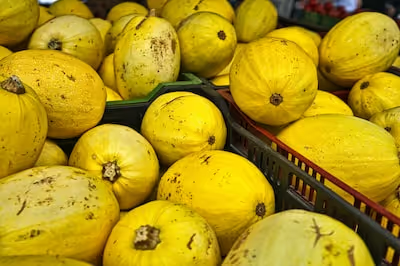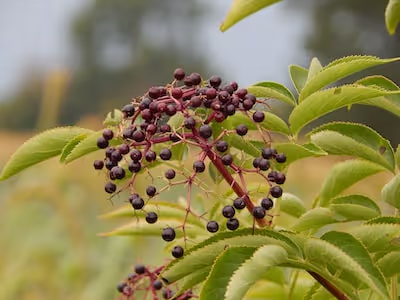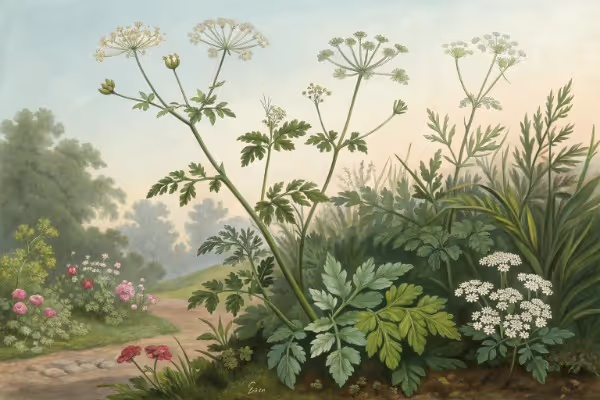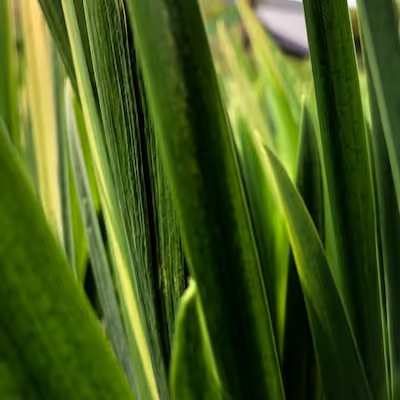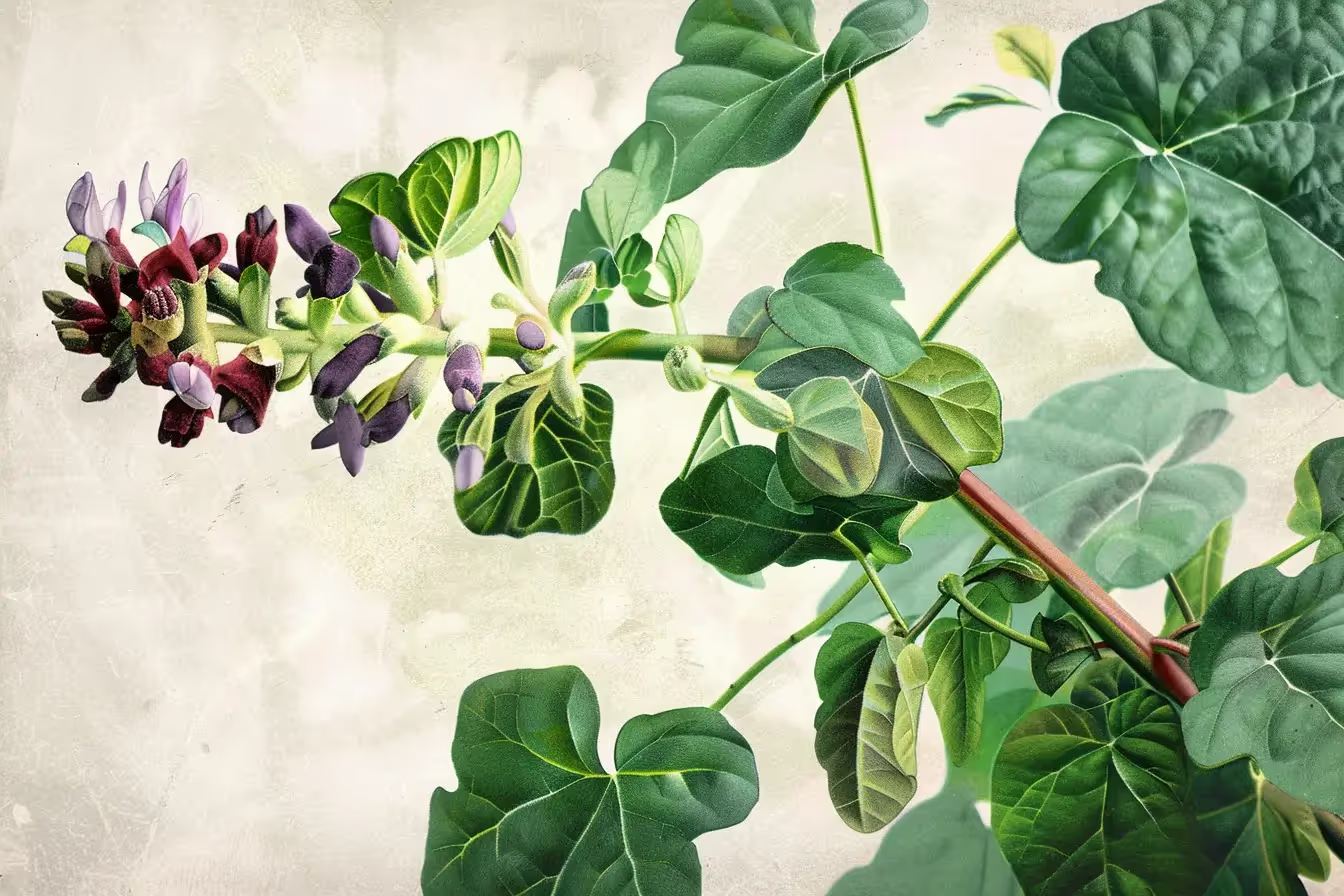Growing Malanga at Home for Fresh, Nutritious Meals

Growing Malanga
Growing malanga rewards gardeners with a versatile root vegetable, packed with fiber and nutrients. Plant it in warm, well-draining soil, give it generous moisture, and you'll harvest tasty tubers perfect for savory stews or crispy chips. Curious about cultivating your own malanga? Read on to discover how simple steps can lead to hearty, homegrown meals.
Cheatsheet: Home-Grown Malanga for Flavor and Wellness
🌱 Choosing Seeds & Soil
- Malanga corms (not seeds; use fresh, firm pieces)
- Loose, well-drained loam; pH 5.5–7
- Avoid clay or waterlogged soils
🛠️ Tools and Products You’ll Need
- Shovel
- Compost or aged manure
- Mulch (straw/leaves)
- Garden gloves
- Watering can or hose
☀️ Location & Climate
- Full sun or partial shade
- Grows best at 77–95°F (25–35°C)
- Frost kills plant; grow after last frost
📝 Planting Steps
- Cut corms into 2–4 oz (60–120g) segments with 1–2 buds
- Let pieces dry 1–2 days
- Dig holes 4–8 in (10–20cm) deep, 24 in (60cm) apart
- Mix in compost; plant corms bud-side up
- Water well, then mulch thickly
💧 Water & Nutrients
- Keep soil moist but never soggy
- Apply organic fertilizer monthly
- Top up mulch to reduce weeds, conserve moisture
🦠 Pest & Disease Prevention
- Rotate beds yearly
- Use neem spray for aphids or mites
- Remove yellow leaves to deter fungus
⏳ Harvest & Storage
- Harvest 8–10 months after planting, when leaves yellow
- Gently lift corms; cure in shade 2–3 days
- Store in cool, dry place up to 2 months
🍽️ Nutrition & Kitchen Use
- Rich in fiber, potassium, magnesium, vitamin C
- Use cooked in soups, mash, fries; never raw (oxalates)
🌾 Self-Sufficiency Boost
- 1 plant yields 6–13 lbs (3–6 kg) corms
- Leaves edible when cooked; feed stems to livestock
✨ Pro Tip
Intercrop with beans to fix nitrogen and shade soil.
-
Growing Malanga at Home for Fresh, Nutritious Meals
I grow malanga for the same reason I save bacon grease in a jar: flavor meets practicality. The plant is Xanthosoma, a cousin of taro, and the corms cook up creamy, nutty, and deeply satisfying.
In markets it shows up as yautía, tannia, cocoyam, and sometimes just “malanga.” It’s not taro; taro is Colocasia, and the leaves point down, while malanga leaves tilt up like little sails.
Climate, timing, and site
Malanga loves heat and steadiness. I plant when nights stay above 65 F or 18 C and soil is warm to the wrist.
It tolerates partial shade, which helps leaf health in hot inland summers. Full sun works near the coast with steady irrigation.
Target a rich, loose bed with pH 5.5 to 6.5. Heavy clay needs chunky compost and coarse sand so the cormels don’t deform.
Planting stock and spacing
Plant small pieces of corm called cormels or “setts,” each with a visible bud. I set them 2 to 3 inches deep, or 5 to 7.5 cm, bud up.
Give plants room: 24 to 36 inches apart, or 60 to 90 cm, in rows 36 inches apart, or 90 cm. Crowding shrinks yield and invites blight.
Soil prep that pays
I mix in 2 to 4 inches of finished compost, plus a handful of a balanced organic fertilizer at planting. Malanga is a feeder, like potatoes that took a Pilates class.
Good drainage prevents soft rot. Raised beds help in humid zones with summer storms.
Water and nutrition
Keep soil consistently moist but never soupy. I aim for about 1 to 1.5 inches of water per week, or 25 to 38 mm, and mulch with shredded leaves.
Sidedress at 6 and 12 weeks with a 5-5-5 or similar. Leaves tell you the truth: pale means nitrogen; purple streaks can hint at phosphorus shortfalls.
Containers and small spaces
Yes, it grows in tubs. I use a 20 to 30 gallon container, or 75 to 115 liters, filled with a high-porosity mix cut with pine fines.
One plant per container yields cleaner, straighter cormels and fewer rot issues. Keep the pot shaded on its sides so roots don’t cook.
Heat, shade, and wind
Plants cruise at 77 to 95 F, or 25 to 35 C. Above that, I add 30 percent shade cloth in the afternoon window.
Wind tears the big leaves and stresses petioles. A simple fence panel breaks gusts and boosts growth.
Pests and diseases I actually see
Aphids congregate on petioles and transmit dasheen mosaic virus; I blast them with water, then release lacewings if needed. Slugs chew the tender new leaves, so I bait with iron phosphate.
Root-knot nematodes can deform cormels. I rotate with marigold and mustard cover crops, then solarize beds in peak summer.
Leaf blights flare in warm, wet spells. Morning irrigation and wider spacing curb it better than any spray on my shelf.
FAOSTAT reports combined global production of taro and cocoyam over 15 million metric tons annually, with West Africa leading output. That demand tracks straight to home gardens that want reliable starch on a small footprint.
Growth calendar
Sprouting takes 2 to 4 weeks, depending on warmth. Vegetative growth runs another 3 months while the root system bulks.
From planting to harvest I expect 8 to 11 months. Early lifting gives smaller cormels but bright flavor and quick cooking.
Harvest, curing, and yield
I dig when the oldest leaves yellow and petioles slump. A digging fork and patience beat a shovel every time.
Each plant gives 3 to 8 pounds, or 1.4 to 3.6 kg, in my loam. I brush off soil, dry in shade 2 to 3 days, and store at 55 to 65 F, or 13 to 18 C, with high humidity.
Never refrigerate raw corms. Cold injury tastes like cardboard and cooks like it too.
Safety and prep in the kitchen
Raw malanga contains calcium oxalate crystals, just like taro. I wear gloves for peeling, rinse well, and cook thoroughly.
Boil, steam, roast, or fry until tender. The texture lands between Yukon Gold and chestnut, and it purées like silk.
Nutrition you feel
Per 100 g, you’re looking at roughly 26 g carbohydrates, 3 g fiber, and a solid shot of potassium, based on USDA-style root crop profiles. I lean on it for gentle starch that sits well during long garden days.
Resistant starch improves after cooling. I often chill cooked slices, then sear in a hot pan for dinner.
Varieties that earn space
- Yautía Blanca: white flesh, mild, quick cooking, reliable sets in mixed sun.
- Yautía Amarilla: yellow flesh, richer flavor, a favorite for fritters and soups.
- Malanga Lila: faint lavender flecking, slightly drier texture, fries beautifully.
Local naming varies, so I always look for Xanthosoma on the tag. I avoid anything labeled Colocasia if I’m chasing classic malanga flavor.
Buying guide and quick picks
- Planting stock: choose firm, unblemished cormels with clear buds; reject anything soft or weeping.
- Fertilizer: a balanced organic granular plus liquid seaweed during leaf expansion hits the sweet spot.
- Mulch: coarse wood chips over a leaf layer keeps moisture steady and soil cool.
- Tools: a broadfork to loosen soil before planting pays off at harvest.
Kitchen uses gardeners actually cook
- Malanga fritters with garlic and culantro; batter should hold a spoon trail.
- Puréed soup with chicken stock, scallions, and lime; finish with olive oil.
- Roasted wedges with smoked paprika; 425 F or 220 C, 25 minutes, flip once.
- Gnocchi-style dumplings with cassava flour; surprisingly light if you don’t overwork it.
Field notes and small wins
Interplanting with bush beans gave me better malanga leaves, likely from wind protection and a bit of nitrogen. The beans finished before the corms needed the space.
My best harvest came from a bed that grew mustard, then sat under a silage tarp for six weeks. Fewer nematode knots and straighter cormels.
Malanga vs taro vs eddoe
- Malanga (Xanthosoma): upward-angled leaves, fuzzier petioles, drier, nuttier flesh.
- Taro (Colocasia): downward-angled leaves, wetter fields tolerated, stickier texture when cooked.
- Eddoe: smaller corms, often stronger oxalate bite, good for quick fry-ups.
Pre-sprouting for a head start
I pre-sprout cormels on damp peat at 80 F or 27 C for two weeks. A heat mat and a vented tray turn a slow starter into a sprinter.
Plant gently once the bud nubs to 0.5 inch, or 1.2 cm. Break the nub and you lose weeks.
Common missteps I see
- Overwatering in cool soil, which invites soft rot before roots establish.
- Deep planting in heavy clay, which starves the sprout of oxygen.
- Starving plants midseason; leaves fade and yields flatline.
- Storing corms in the fridge; texture and flavor degrade fast.
Winter and replanting
In frost-free zones, I leave a few small cormels in the ground to regrow. In cold regions, I lift, cure, and replant the following warm season.
Any sprouted market corm with life in it can become a mother plant. I quarantine it for two weeks to watch for hitchhikers.
Data and references I trust
University of Florida IFAS offers solid guidance on aroids and warm-season roots, including pH and spacing ranges. University of Hawaii CTAHR explains the aroid oxalate issue and cooking safety with clarity.
FAO and FAOSTAT track production trends for cocoyams and taro that align with what I see: steady demand and strong performance in tropical and subtropical gardens. CIRAD’s work on Xanthosoma physiology matches the heat and moisture responses I observe in the field.
“Cocoyams tolerate partial shade and respond to high organic matter,” notes extension literature, which mirrors the leaf sheen and yield bump I get under fruit trees.
Quick FAQ for Growing Malanga
How long to harvest? Plan on 8 to 11 months in warm soil with steady water.
Sun or shade? Morning sun with dappled afternoon shade gives me the best leaves and corms.
Can I grow indoors? Only with high light, large containers, warm temps, and humidity; outdoors wins every time.
Is the foliage edible? Yes after thorough cooking, and only from healthy plants; raw leaves irritate.
Can I plant store-bought corms? Yes if they are firm and unsprouted; cut into setts with one bud each and cure the cut overnight before planting.
One last field taste
The first time I forked up a hill of malanga, the corms thudded like fossil eggs. I scrubbed, simmered, mashed with garlic and butter, and the bowl went quiet except for spoons scraping the bottom.
Frequently Asked Questions About Growing Malanga
What kind of soil suits malanga best?
Malanga thrives in rich, loamy soil that's loose and drains freely. Incorporate plenty of organic matter—think compost or aged manure—to provide the plant with the nourishment it craves. Avoid heavy clay soil or overly sandy conditions that starve the root of proper moisture and nutrients.
How much sunlight does malanga require?
While tolerance is part of malanga's charm, it favors dappled sunlight or partial shade. Think tropical understory—filtered morning sun is ideal, especially in warmer climates. Too much direct sunlight scorches leaves, while excessive shade stunts root growth.
How often should malanga be watered?
Give malanga a steady drink—regular moisture without drowning. The goal is consistently damp soil, but never waterlogged. During dry spells or hotter months, watering deeply about once or twice per week usually satisfies.
What's the best way to fertilize malanga?
Malanga hungers for a generous diet high in potassium and phosphorus. Feed it monthly with an organic fertilizer or compost tea. Well-balanced nutrition strengthens roots, boosts yields, and contributes to richer flavor profiles.
When is malanga ready for harvest?
Patience rewards the gardener—the malanga tubers are typically ready to harvest after 8 to 12 months. Watch for leaves dying back naturally—a signal from the plant that it's matured, flavorful, and ready to be unearthed.
Any common issues or pests when growing malanga?
Fortunately, malanga rarely succumbs to serious pest problems, though occasional visits from aphids or spider mites can occur. Use organic neem oil treatments promptly to discourage unwelcome guests. Keep an eye out for fungal diseases due to excess moisture, and ensure proper spacing and drainage to minimize risks.
Growing Malanga gives you more than just a gorgeous, leafy patch—it hands you a ticket to bold, homegrown flavor and rich nutrition. Tucked beneath its broad leaves, those underground corms deliver a nutty heartiness few other roots can match. Keep your soil moist and loose, and you’ll be rewarded with harvests that shine in soups, stews, and fritters. If you’re already growing crops like jicama or sweet potatoes, you’ll find malanga fits right in. The secret is patience; let the plant do its slow work, then enjoy the kind of ingredient you just can’t buy at any supermarket. With some steady attention, growing malanga at home brings both flavor and pride to your table—an edible reminder that good things come to those who dig deep.
Pro Tips for Maximum Malanga Harvests
Boost Growth with Soil Amendments
- Incorporate aged compost and well-rotted manure to condition soil, improve drainage, and provide balanced nutrients.
- Apply bone meal or rock phosphate to stimulate robust root development and enhance tuber size.
- Add kelp meal as a trace mineral source for vigorous, disease-resistant plants.
Optimize Spacing for Yield
- Space malanga plants at 3 feet (0.9 m) apart; rows spaced at 4 feet (1.2 m) facilitate ample airflow and reduce fungal risk.
- Planting in triangular grids rather than linear rows maximizes garden bed productivity.
Effective Mulching Techniques
- Use natural mulches like shredded straw, coconut husks, or dry leaves to retain soil moisture and prevent weed emergence.
- Maintain mulch thickness between 2–3 inches (5–7.5 cm) for optimal soil temperature stability and root protection.
Water Wisely for Tuber Development
- Maintain consistently moist but well-drained soil; apply water at 1 inch (2.5 cm) weekly, increasing slightly during hotter months.
- Drip irrigation or soaker hoses reduce water waste and prevent foliage wetness, lowering disease incidence.
Integrated Pest and Disease Control
- Plant malanga with marigolds, basil, or lemongrass to naturally repel pests and attract beneficial insects.
- Remove yellowing leaves promptly to limit fungal spread; apply neem oil as an organic preventive spray biweekly.
Harvest and Storage Strategies
- Harvest when leaves turn yellow and wilt, approximately 10–12 months after planting; carefully loosen soil to avoid tuber injury.
- Cure cleaned tubers at room temperature (60–75°F / 16–24°C) for 2–3 days before storage to prolong freshness.
- Store cured tubers in a dry, ventilated area at approximately 55–60°F (13–16°C) for extended storage up to several months.
Nutritional Highlights
- Malanga provides substantial dietary fiber, potassium, magnesium, and Vitamin C, enhancing heart health and digestive wellness.
- Its low glycemic index makes it ideal for controlling blood sugar levels and sustaining energy.
Find out which plants will thrive in your garden!
Answer a few fun questions and get custom plant recommendations perfect for your space. Let’s grow something amazing together!

start your season
